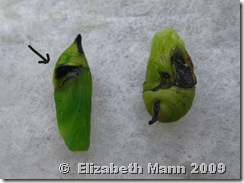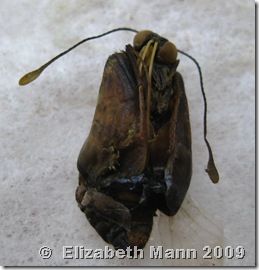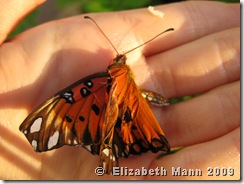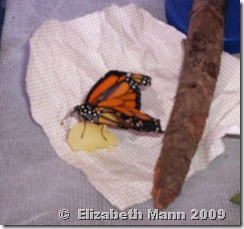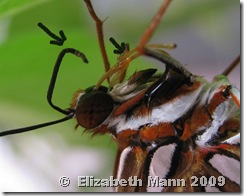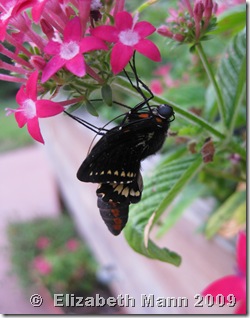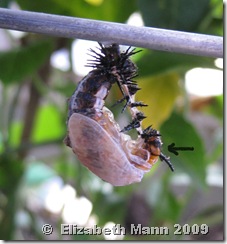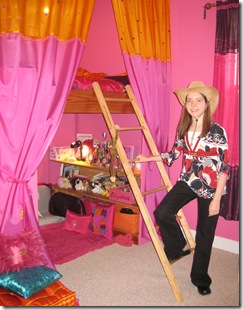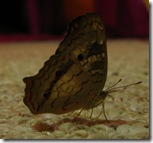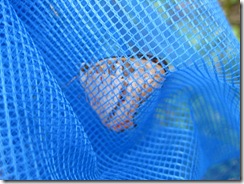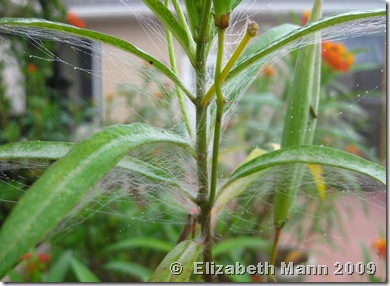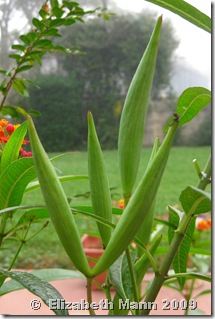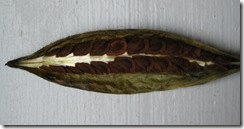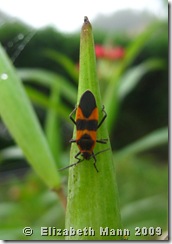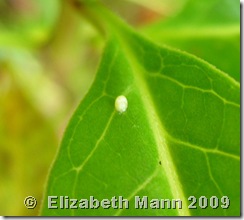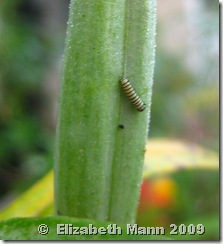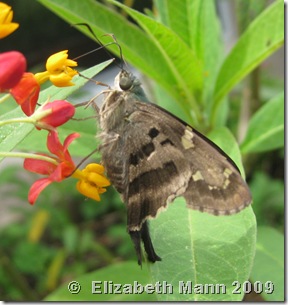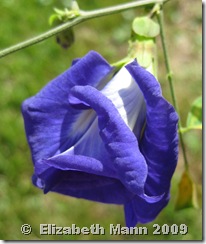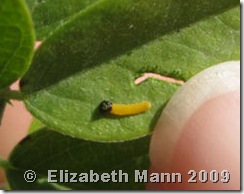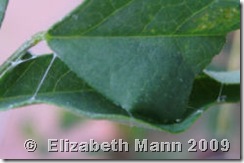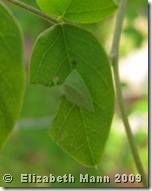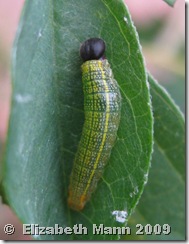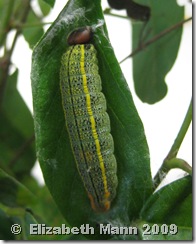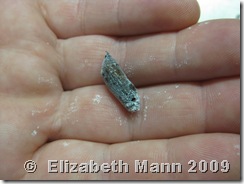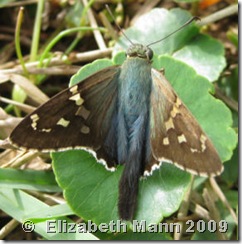
Cloudless Sulpur caterpillars use camouflage for protection as they feed on Cassia trees. During the summer months, the caterpillar's green color matches the leaves of Cassia plants. In November the Cassia becomes covered in beautiful yellow flowers. As the caterpillars eat the flowers, they begin to turn yellow. This yellow color provides perfect camouflage while the caterpillar crawls among the blossoms.

This Cloudless Sulphur caterpillar has a greenish hue. It has been feeding on Cassia leaves. Cloudless Sulphur caterpillars green color provides the best camouflage during the summer months. The caterpillars will begin turning yellow only in the fall months when the Cassia tree blooms and the caterpillar feeds on the yellow flowers.
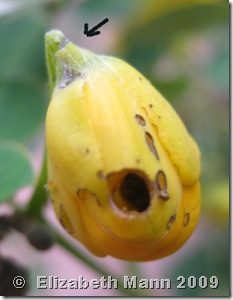 | The arrow points to the silk created by the industrious creature. The silk secures the bud to the stem and keeps it from falling with the extra weight of the caterpillar. |
One day in my garden, I discovered yet another survival skill of the Cloudless Sulphur. On my Cassia flower buds I noticed holes, but didn't see a caterpillar crawling near by to create the chew marks. As I inched closer to observe, a caterpillar head suddenly passed inside the hole. At that moment, I realized a creature had made a home inside the flower! I also noticed that this industrious creature wrapped silk around the stem and bud to keep it from falling with its extra weight.
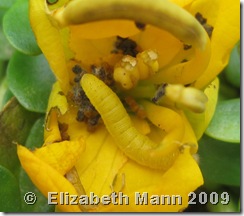
With my curiosity rising, I gently opened the bud. To my surprise inside was a yellow Cloudless Sulphur caterpillar! Inside its “home” It was happily eating without having to worry about wasps or predators bothering it. I discovered that this Cloudless Sulphur caterpillar is a wonderful house keeper. In the flower bud it had neatly piled its droppings in the corner and wrapped it in silk. The caterpillar wasn't very happy with my ruining its “home”. I gently transported it to my caterpillar nursery.
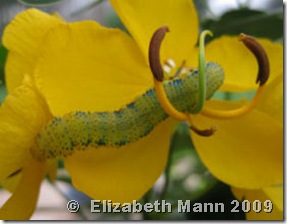
Through this discovery, I learned that not only can Cloudless Sulphurs eat among the flowers, but they can also eat inside of the flower buds. The small lighter weight caterpillars are more likely to stay inside the buds. The large caterpillars are too heavy and eat too much to feed inside. They must depend on their camouflage to protect them from predators. Life as a caterpillar is difficult, but camouflage is one of the defenses God has provided for these amazing insects.
15 more days until my Costa Rica tour!

